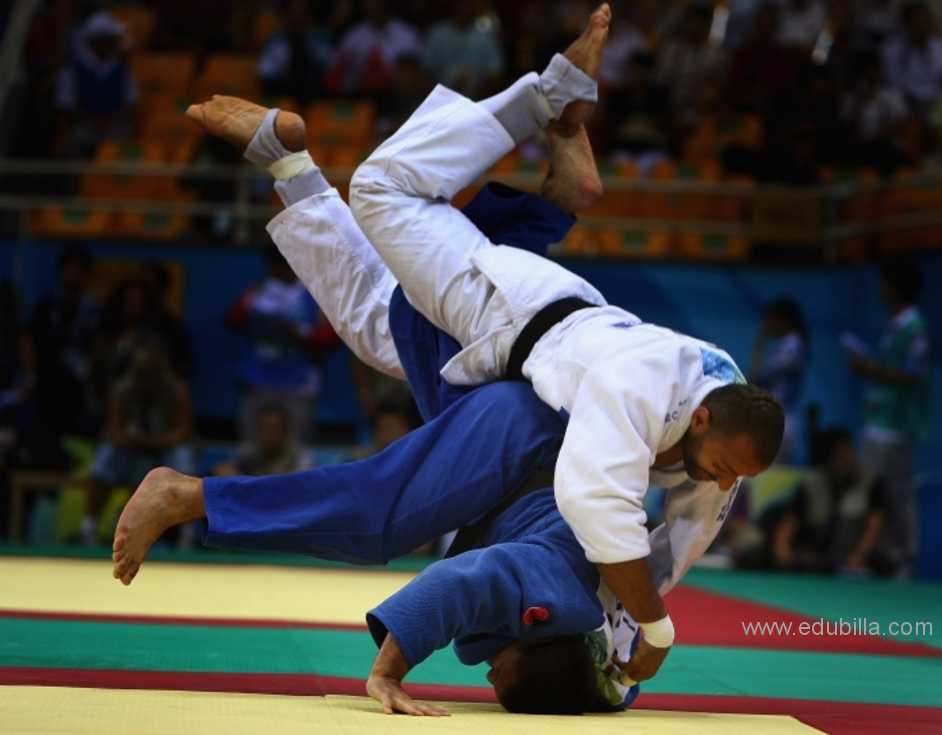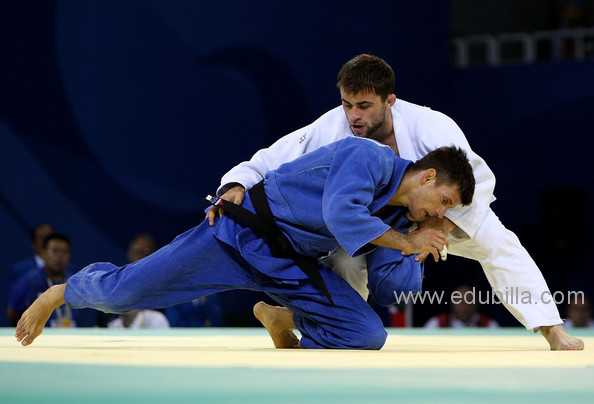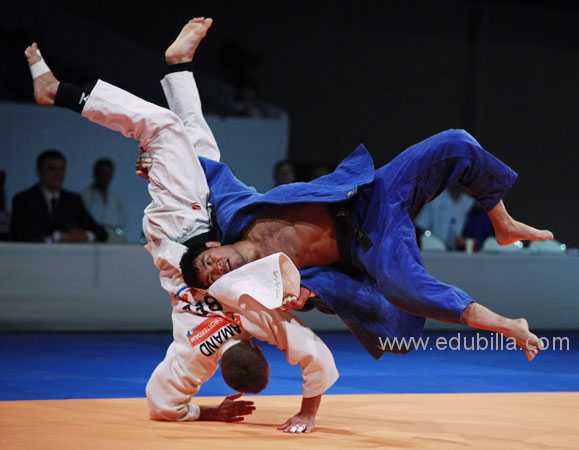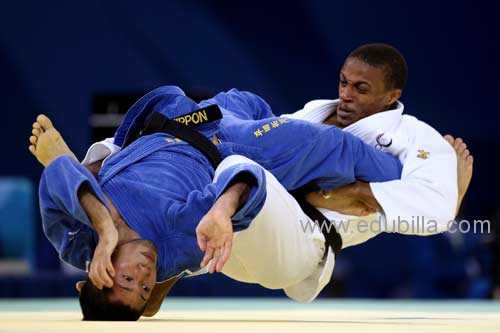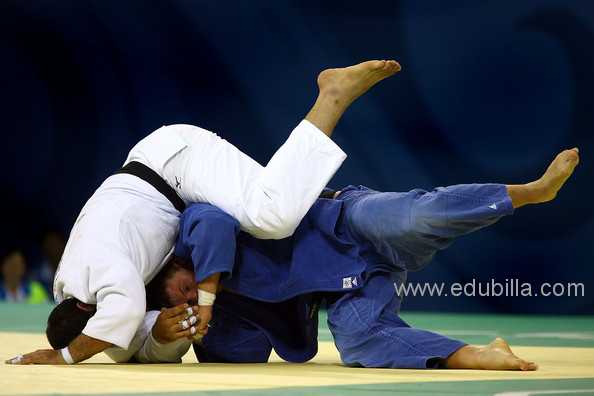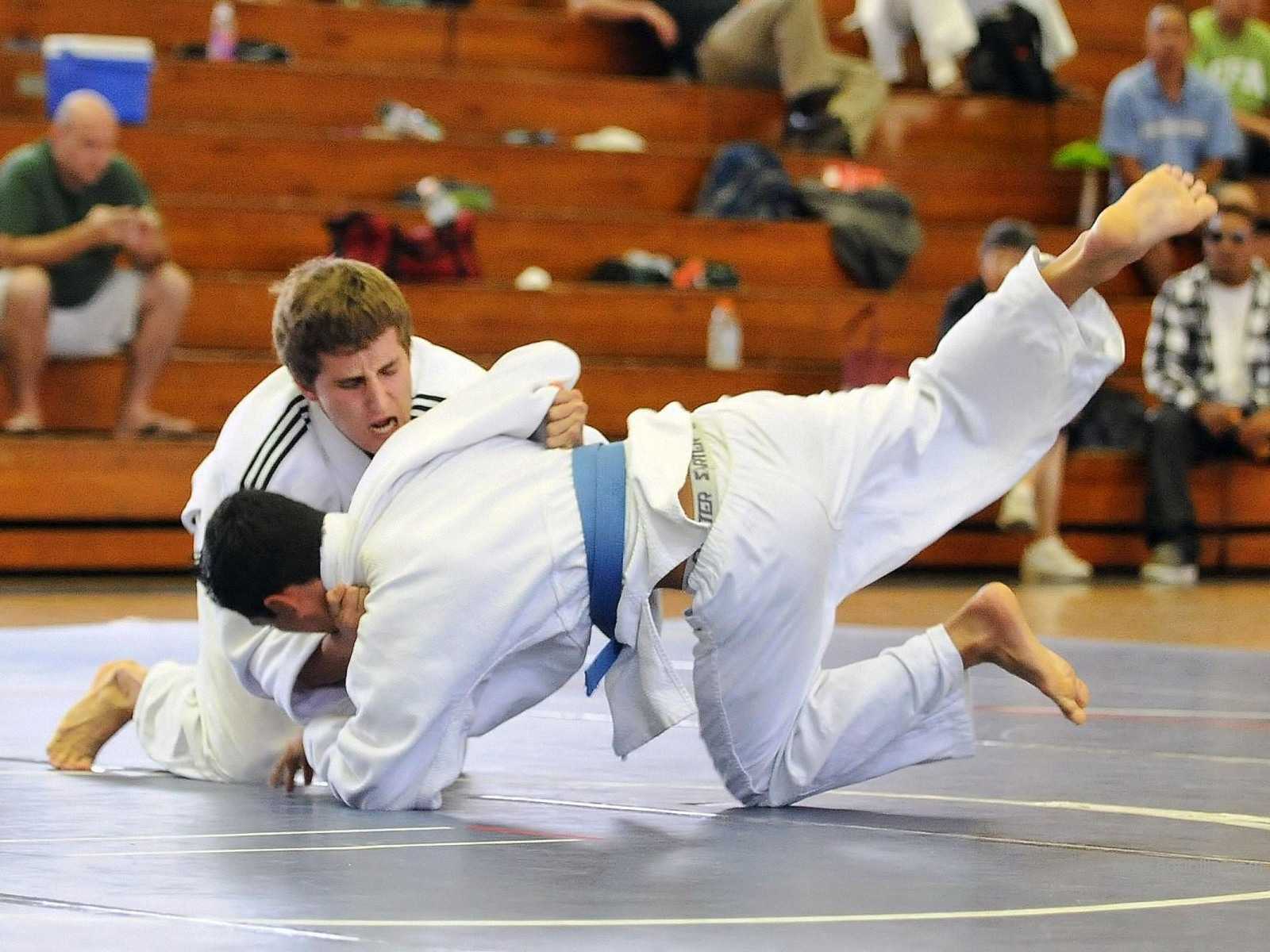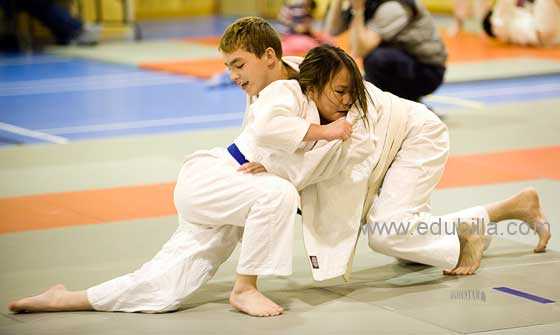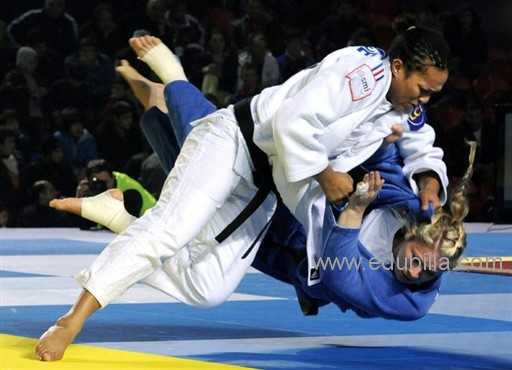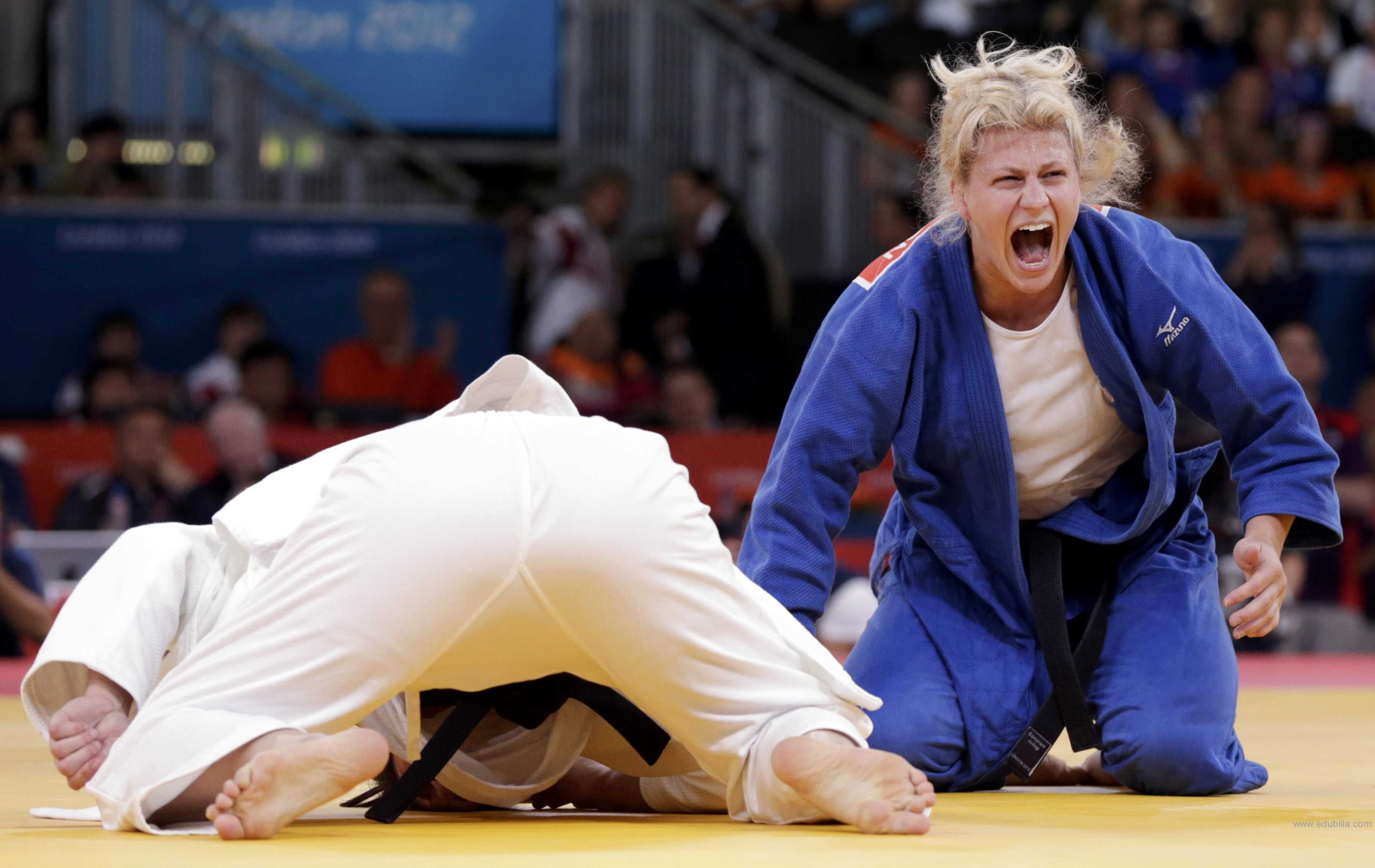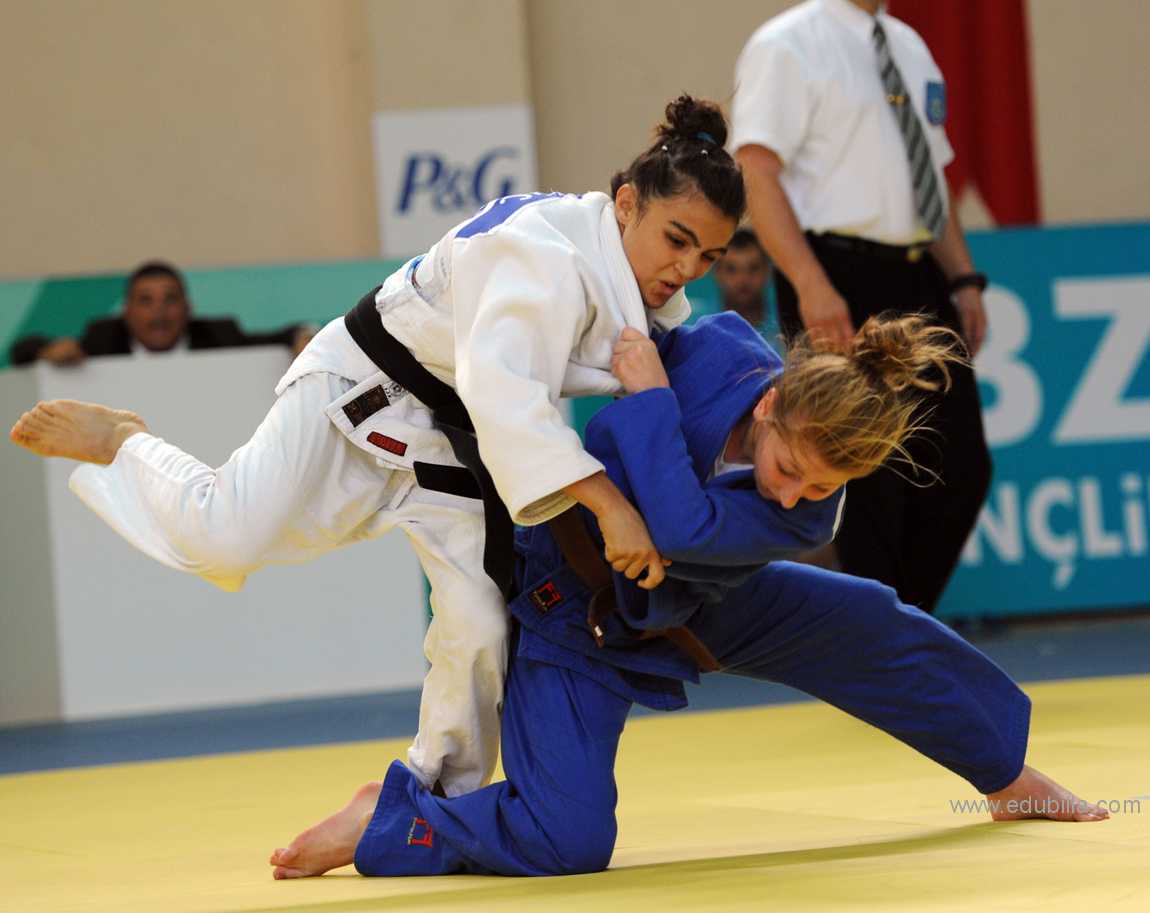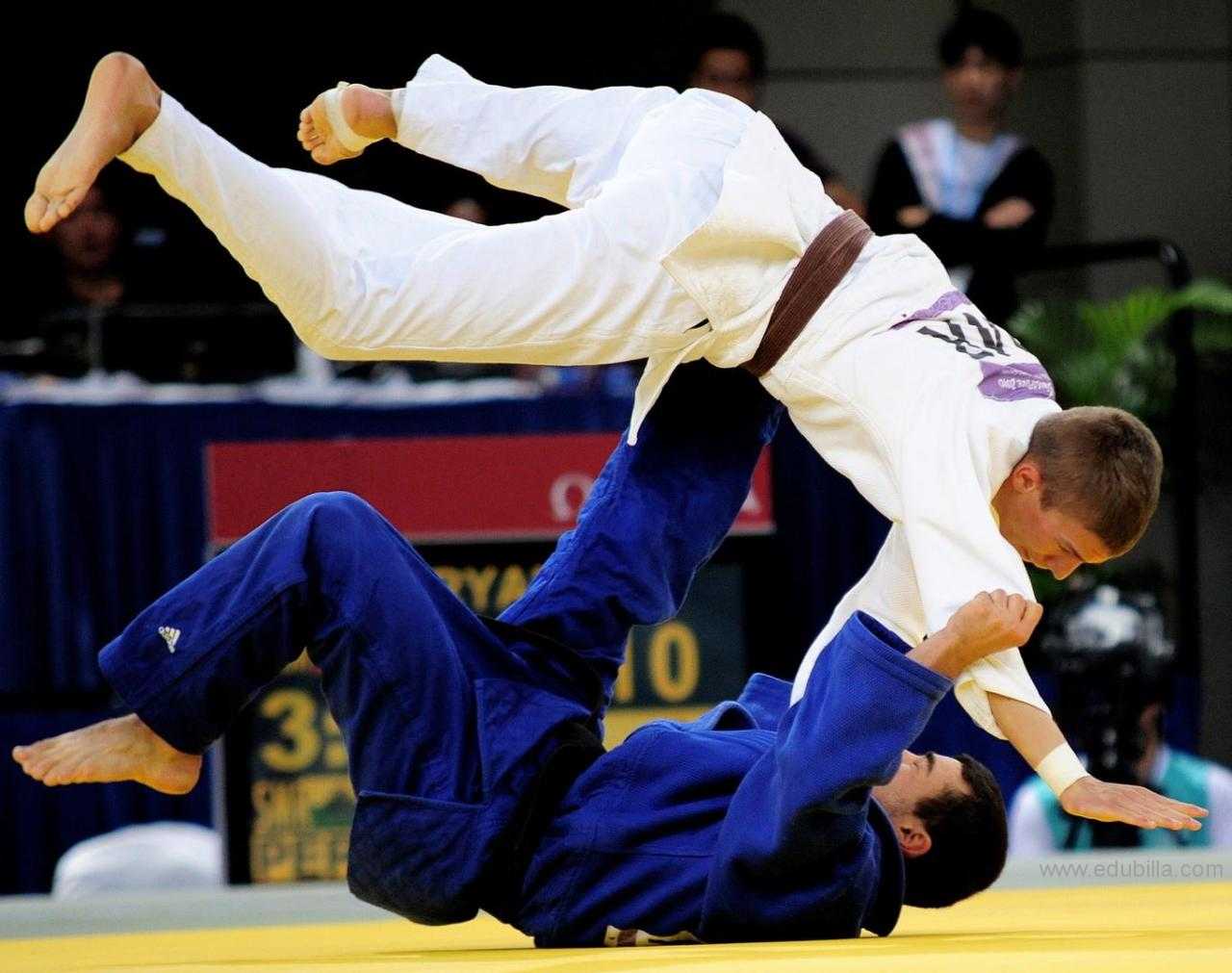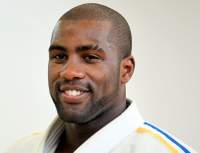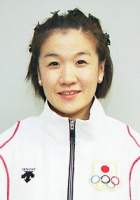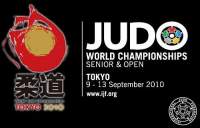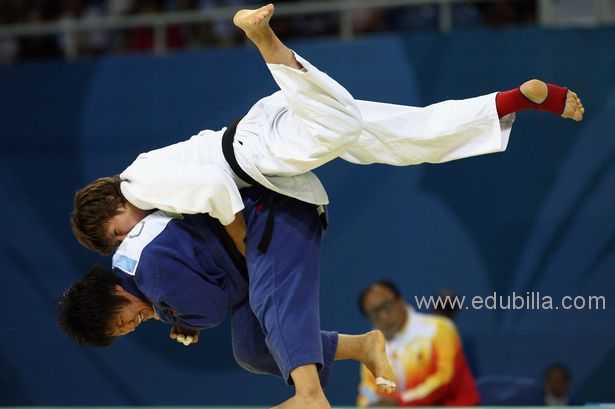
Overview Of Judo
The philosophy and subsequent pedagogy developed for judo became the model for other modern Japanese martial arts that developed from koryu . The worldwide spread of judo has led to the development of a number of offshoots such as Sambo and Brazilian jiu-jitsu.
Olympic medalists:
Several judo practitioners have made an impact in mixed martial arts. Notable judo trained MMA fighters include Olympic medalists Hidehiko Yoshida (Gold, 1992), Naoya Ogawa (Silver, 1992), Pawel Nastula (Gold, 1996), Makoto Takimoto (Gold, 2000), Satoshi Ishii (Gold, 2008) and Ronda Rousey (Bronze, 2008), former Russian national judo championship Bronze medalist Fedor Emelianenko, Karo Parisyan, Don Frye, Antonio Silva, Rick Hawn, Hector Lombard, Yoshihiro Akiyama and Dong-Sik Yoon.
Game Rules
Safety:
-Intentionally injuring an opponent is not permitted.
-Punching, kicking, and other strikes are not allowed.
-Touching the opponent's face is not allowed.
-Attacking joints other than the elbow is not allowed.
-Head dives are not permitted.
-The technique known as kawazu gake is not permitted.
-The technique known as kani basami is not permitted.
-Wearing any hard or metallic object during competition is not permitted. The penalty for violating this rule is hansoku make (see Penalties, below).This includes wedding rings, earrings, hard-plastic protective gear, hair-ties with metal parts, wristwatches, and even press-studs on underpants.
Etiquette:
Contestants must bow before stepping onto the mat.
Contestants must bow to each other before and after practice or competition.
Inappropriate behaviour, such as foul language and bodily gestures, is not tolerated.
Scoring:
-Awarding of ippon'One full point'. Award of ippon decides the winner and ends the match.
-Awarding of waza-ari . 'One half point'. When two waza-ari are awarded in the same match, it is considered to be same as ippon and the match ends (the judge exclaims 'Waza-ari, awasete ippon')
-Awarding of yuko. One score of waza-ari is considered greater than any number of yuko scores. Yuko is currently the smallest score that can be awarded.
-Awarding of koka. Was introduced in 1975 and removed from IJF competition at the end of 2008. Any number of koka scores does not add up to a yuko score.
Penalties:
Two types of penalties may be awarded. A shido is awarded for minor rule infringements. A shido can also be awarded for a prolonged period of non-aggression. Each time a contestant is awarded a shido, the other contestant gets points according to how many shidos the opponent has, as if he had scored them himself. For the first shido a warning is given to the offending party (this replaces the previous practice of awarding a Koka), after that the opponent will yuko, waza-ari and ippon respectively for each shido attained (if the opponent has a waza-ari, and receives another from the opponent's shidos, he wins the match). After four shidos are given, the victory is given to the opponent, this is an indirect hansoku-make, and does not result in expulsion from the tournament. The penalty of hansoku make is awarded for major rule infringements, or for accumulating four shidos. If hansoku make is awarded for a major rule infringement, it results not just in loss of the match, but in expulsion from the tournament.
Competition area:
The competition area must be padded with tatami. The minimum allowable size is 14 x 14 meters. The match takes place in an 8 x 8 meter to 10 x 10 meter zone within this larger area. The surrounding space acts as a safety zone. When two competition areas are side by side, there must be at least a 3 meter safety zone between them.
Grips:
Rules related to grips are primarily motivated by the desire to avoid stalling, to avoid providing undue advantage, or to reduce the chance of injury.
-Deliberately avoiding gripping is not permitted.
-In a standing position, it is not permitted to take any grip other than a "normal" grip for more than three to five seconds without attacking. A "normal" grip is one where the right hand grips some part of the left hand side of the opponent's jacket (and the left hand grips some part of the right hand side of the opponent's jacket.) A non-normal grip may involve grabbing the belt, or the trousers, or the wrong side of the jacket. (A non-"standard" grip is one that does not involve the traditional sleeve/collar grip. There are no time-limits related to non-"standard" grips as long as they are not non-"normal".)
-A "pistol grip" on the opponent's sleeve is not permitted.
Age:
Judo competitions typically have some safety-related rules related to age: chokes are prohibited under a certain age (typically 13), and arm bars are prohibited under a certain age (typically 16).
The duration of matches is also dependent on the age of the competitors. Match length is typically three minutes for children, five minutes for teenagers and young adults, and three minutes for 'masters' (adults thirty years of age or older).
Gi:
Rules related to the gi are primarily related either to safety or to preventing contestants from wearing gis that prevent their opponent from being able to get a grip on them.
-The sleeves of the jacket are not allowed to be too short: they must extend down to no more than 5 cm above the wrists with the arms extended in front of the body.
-The legs of the trousers are not allowed to be too short: they must extend down to no more than 5 cm above the ankle.
-Excessive advertising on the gi must be avoided, and may result in a forced loss if an appropriate gi can't be found.
Equipments Need For Judo
Tape:
Two pieces of tape, one blue and one white, appear on the middle of the contest area.
The mat:
The competition area in judo is comprised of vinyl-covered foam mats, or tatami.
Uniforms:
The judoka wear loose-fitting judo uniforms called judogi, consisting of pants, a jacket and a belt tied at the waist.
History Of Judo
Jigoro Kano:
Jigoro Kano was the founder of judo. Judo was the first Japanese martial art to gain widespread international recognition, and the first to become an official Olympic sport. Pedagogical innovations attributed to Kano include the use of black and white belts, and the introduction of dan ranking to show the relative ranking between members of a martial art style. Well-known mottoes attributed to Kano include "Maximum Efficiency with Minimum Effort" and "Mutual Welfare and Benefit."

Father of Japanese Sports:
In his lifetime, Jigoro Kano attained a doctorate degree in Judo, a degree equivalent to the twelfth dan, awarded to the originator of Judo only. He constantly worked to ensure the development of athletics and Japanese sport in general, and as a result is often called the ”Father of Japanese Sports”. In 1935 he was awarded the Asahi prize for his outstanding contribution to the organizing of sport
Olympic history:
Judo made its very first appearance at the Olympic Games in 1964 in Tokyo. However, it was not included in the Olympic programme in 1968 in Mexico City, but returned, never to leave again, at the 1972 Games in Munich. As for women’s judo, it was added to the Games in 1992 in Barcelona.
Men and women now compete in seven weight categories. There was originally a men’s category open to all weights, but this event was withdrawn after the 1984 Games in Los Angeles.
This discipline is, logically, dominated by the Japanese, followed by the French and then the Koreans, who win a large number of medals.
The History of Judo at a Glance:
1880-he first black belts to denote a Dan rank in the 1880s, initially the wide obi was used; as practitioners trained in kimono, only white and black obi were used. It was not until the early 1900s, after the introduction of the judogi, that an expanded colored belt system of awarding rank was created.
1882-Judo is a martial art that was born in Japan, and it is now known around the world as an Olympic sport. Judo was established in 1882 by combining jujitsu, a form of wrestling, with mental discipline. The roots of jujitsu lie in sumo, which has a long, long history; sumo is mentioned in the Nihon shoki (Chronicle of Japan), a document from 720 that describes the history of Japan from the mythical age of the gods until the time of Empress Jito, who reigned from 686 to 697.
1868-The era of samurai rule came to an end with the Meiji Restoration of 1868, and Western culture began filtering in into Japanese society. Jujitsu fell into decline, but the enthusiasm of one young man rescued it from extinction. That man was Jigoro Kano, the founder of judo as we know it today. Kano excelled in schoolwork but had an inferiority complex about his small physique. So he became an apprentice of Yanosuke Fukuda, a master of the Tenjin Shin'yo school of jujitsu, when he was 17 and worked to become stronger. In May 1882, when he was just 21 years old, he took the best things about each jujitsu style and created a single new school. This was the birth of modern judo. At first he had just nine students, and the dojo (practice hall) measured just 12 jo (about 24 square yards).
1877-In 1877, as a student at the Tokyo-Kaisei school (soon to become part of the newly founded Tokyo Imperial University), Kano learned that many jujutsu teachers had been forced to pursue alternative careers, frequently opening Seikotsu-in.After inquiring at a number of these, Kano was referred to Fukuda Hachinosuke (c.1828–1880),a teacher of the Tenjin Shin'yo-ryu of jujutsu, who had a small nine mat dojo where he taught five students.
1887-The categorization of Kodokan Judo was completed about 1887. The Kodokan had three broad aims: physical education, contest proficiency and mental training.
1884-The Kodokan Monthly Tournamentand the biannual Red and White Tournament both of which started in 1884 and continue to the present day
1889 -Kano went to Europe in 1889 to introduce judo outside of Japan. A famous episode occurred aboard a ship during his voyage: When a foreigner made fun of Kano, he threw the man down but put his hand under the man's head to prevent him from getting hurt. This illustrated how judo combined practical fighting techniques with thoughtfulness for one's enemy. Kano always maintained a global point of view, serving as a member of the International Olympic Committee, and worked tirelessly to spread judo around the world.
1916-1925-In 1916, additional rulings were brought in to further limit kansetsu waza with the prohibition of ashi garami and neck locks, as well as do jime.These were further added to in 1925, in response to Kosen judo , which concentrated on ne waza at the expense of tachi waza. The new rules banned all remaining joint locks except those applied to the elbow and prohibited the dragging down of an opponent to enter ne waza
1941-1948-The All-Japan Judo Championships were first held in 1930 and have been held every year, with the exception of the wartime period between 1941 and 1948, and continue to be the highest profile tournament in Japan.
1956-Judo's international profile was boosted by the introduction of the World Judo Championships in 1956.
1964-Nevertheless, judo became an Olympic sport for men in the 1964 Games in Tokyo. The Olympic Committee initially dropped judo for the 1968 Olympics, meeting protests.Dutchman Anton Geesink won the first Olympic gold medal in the open division of judo by defeating Akio Kaminaga of Japan. The women's event was introduced at the Olympics in 1988 as a demonstration event, and an official medal event in 1992. Paralympic judo has been a Paralympic sport (for the visually impaired) since 1988; it is also one of the sports at the Special Olympics.
1968- The Olympic Committee initially dropped judo for the 1968 Olympics, meeting protests.Dutchman Anton Geesink won the first Olympic gold medal in the open division of judo by defeating Akio Kaminaga of Japan.
1993-The first official MMA fight, the Ultimate Fighting Championship (UFC), was held in 1993. It was advertised as a “no holds barred” fight. At the time, the public perception was that a larger/stronger human could dominate a smaller/weaker human. The fighters came from various martial arts or sports fighting backgrounds, including judo, karate, jiu-jitsu, boxing, wrestling, tae kwon do and kickboxing. They fought until the opponent was knocked out, tapped out (stopping the fight by tapping their hand), or the referee stopped the fight. The winner of the first Ultimate Fighting Championship was a small Brazilian, Royce Gracie, who used judo/Jujitsu submissions to defeat opponents twice his size
1980-The championships were initially a fairly small affair, with 31 athletes attending from 21 countries in the first year. Competitors were exclusively male until the introduction of the Women's Championships in 1980, which took place on alternate years to the Men's Championships.
1987-The championships were combined in 1987 to create an event that takes place annually, except for the years in which Olympic games are held. Participation has steadily increased such that, in the most recent championships in 2011, 871 competitors from 132 countries took part.
1988-The women's event was introduced at the Olympics in 1988 as a demonstration event, and an official medal event in 1992. Paralympic judo has been a Paralympic sport (for the visually impaired) since 1988; it is also one of the sports at the Special Olympics.
Judo is a modern martial art, combat and Olympic sport created in Japan in 1882 by Jigoro Kano. Its most prominent feature is its competitive element, where the objective is to either throw or takedown an opponent to the ground, immobilize or otherwise subdue an opponent with a pin, or force an opponent to submit with a joint lock or a choke. Strikes and thrusts by hands and feet as well as weapons defenses are a part of judo, but only in pre-arranged forms and are not allowed in judo competition or free practice . A judo practitioner is called a judoka.
Origin Of Judo
The origin of Japan’s martial arts:
The takenouchi-ryu martial art system founded in 1532 is considered the beginning of Japan’s Jujitsu forms. Judo was derived from Jujitsu, the art for either attacking others or defending oneself with nothing but one’s own body.
The Kodokan Judo:
In 1882, Dr. Jigoro Kano (The Father of Judo) made a comprehensive study of the ancient self-defence forms and integrated the best of these forms into a sport which is known as Kodokan Judo.
The term Kodokan breaks down into ko (lecture, study, method), do (way or path), and kan (hall or place). Thus it means “a place to study the way”. Similarly judo breaks down into ju (gentle) and do (way or path) or “the gentle way”.
Prof. Kano adopted the superlative parts of all the Jujitsu schools, got rid of precarious parts and the Kodokan Judo was recognized in a few years to be excellent since its students overwhelmed the Jujitsu athletes at the Police Bujitsu Contest.
The categorization of Kodokan Judo was completed about 1887. The Kodokan had three broad aims: physical education, contest proficiency and mental training.
Governing Bodies
International Judo Federation (IJF):
The International Judo Federation (IJF) was founded in July 1951. The IJF was originally composed of judo federations from Europe plus Argentina. Countries from four continents were affiliated over the next ten years. Today the IJF has 200 National Federations on all continents. There are over 40 million people around the globe who practice Judo.
Since 2009, IJF organizes yearly World Championships and the World Judo Tour consisting of five Grand Prix, four Grand Slams, a master tournament and a Continental open tournament.
Presidents of the IJF:
Aldo Torti, Italy, 1951
Risei Kano, Japan, 1952–1965
Charles Palmer Great Britain, 1965–1979
Dr. Shigeyoshi Matsumae, Japan, 1979–1987
Mr. Sarkis Kaloghlian, Argentina, 1987–1989
Mr. Lawrie Hargrave, New Zealand, 1989–1991
Mr. Luis Baguena Spain, 1991–1995
Mr. Yong Sung Park, South Korea, 1995–2007
Mr. Marius Vizer, Austria, 2007
To Visit IJF Click Here
Awards Related To Judo
British Judo Awards:
Young Referee of the Year
Referee of the Year
Official of the Year
Young Volunteer of the Year
Event Volunteer of the Year
Club Volunteer of the Year
Club Coach of the Year
Volunteer of the Year
Club of Year
Judo Ontario Recognition Awards:
It takes a small army of volunteers, friends, family and Judoka to run an organization the size of Judo Ontario. We would like to thank all our supporters for their countless hours of time spent helping Judo Ontario grow into the successful organization it is today.
U16 Male
U16 Female
U18 Male
U18 Female
U21 Male
U21 Female
Senior Male
Senior Female
Joseph Lestrange Award
Judo Ontario Outstanding Appreciation Award
Judo Ontario Outstanding Contribution Award
Referee Contribution Award
Fran McCrodden Award
Outstanding Board Contribution Award
Coach of the Year Award
Lifetime Member Award
Judo NSW Awards:
Judo NSW is a not-for-profit organisation set up to support the sport of Judo. Judo is an inexpensive, safe, dynamic contact sport, which is suitable for boys and girls, men and women.
Judo NSW is the State Sporting Organisation governing the sport of Judo in NSW and is supported by the Australian Sports Commission and NSW Department of Sport & Recreation
Service Awards:
Judo NSW Life Members
Judo NSW Medal of Distinction
Sample Documents Of Judo
-Michael Jordan

